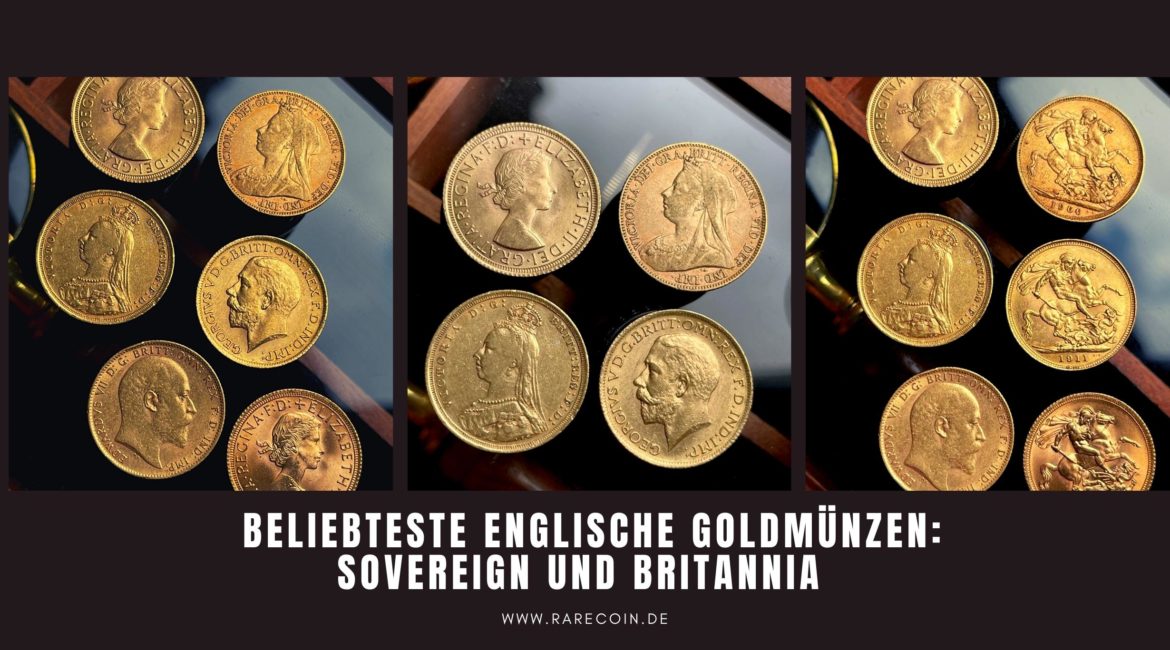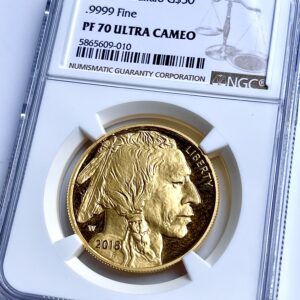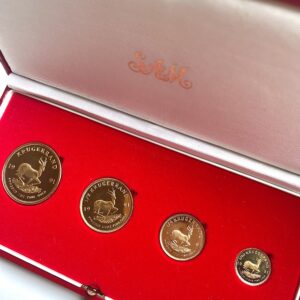Britain is known for its beautiful gold coins, such as Britannia, Sovereign, The Queens Beasts, Guinea and Shilling. The Sovereign and Britannia are the best known, and we’ll take a closer look at them here.
The history of the Gold Sovereign
On October 28, 1489, King Henry VII ordered the representatives of the royal mint to create “new gold money.” At that time, gold coins had been in circulation in England for almost a century and a half. The new coin was the largest in England, both in size and value. He was called Sovereign (English monarch). This name fits very well with this beautiful coin. On the obverse was the portrait of the king on the throne with all the insignia of the crown, and on the reverse the king’s coat of arms with two roses crossing, symbolizing the unity between York and Lancaster after the War of the Roses.
The large and handsome coin was intended to emphasize the power of the king and to convey a political “message” about the stability and success of the crown, not just to satisfy the needs of domestic trade. Sovereigns were minted during the time of all the Tudor monarchs, up to the early years of James I’s reign. The Sovereign had to retire from the scene for two centuries at that time. After defeating Napoleon at Waterloo, Great Britain began to reform its coinage. Gold became the “only standard measure of value.” Initially, it was decided to return 21 shillings (one guinea), but since “the general will of the majority of the nation favored the minting of gold coins with a face value of 20 shillings and 10 shillings instead of guineas, half a guinea and seven shillings.” Thus, a new gold coin with a face value of 20 shillings was created. It was given its old name, Sovereign.
This coin had almost half the weight and diameter of the original sovereign, but the new gold coin of 1817 was admired for its beauty even more than its predecessor. The traditional coat of arms on the reverse was replaced in favor of St. George and the dragon. The reverse was designed by the Italian engraver Benedetto Pistrucci (1783 – 1855).
This coin was so great and had an impact that no other coin has produced. It is therefore difficult to understand why it was replaced in 1825 by a more familiar coin with the royal coat of arms. Fortunately, the coin was restored in 1871 in response to criticism of the poor state of numismatic art with the dragon and the coat of arms. Both bore the portrait of the young Queen Victoria until 1887.
1887 – new versions of the Sovereign
In 1887, when the Golden Jubilee of Queen Victoria was celebrated, new versions of gold and silver coins appeared. This time St. George was only on the obverse of the quince coins. In 1893, the so-called “old” portrait of Queen Victoria by Thomas Brooke replaced the Jubilee portrait on Queen Victoria’s coins, and Saint George eventually received the honor of adorning the reverse of the half-sovereigns as well.
The popularity of St. George on these coins is reflected in the fact that they are minted alongside the portraits of all the monarchs on the sovereigns. Only three times during the reign of Queen Elizabeth I they were given a place of honor: in 1989 with a special commemorative coin for the 500th anniversary of the birth of Queen Elizabeth. Anniversary of the Tudor Quince, in 2002 on the occasion of the Queen’s Golden Jubilee and again in 2005.
Saint George and the Dragon by Pistrucci remains at the head of the Gold Sovereigns family as a symbol of uncompromising standards and excellence in coinage. It is featured on all five ounce coins of 2015; each one is made with the master’s original tools, thus showing Pistrucci’s dynamic masterpiece in all its beauty.
The golden sovereign of George III.
During the reign of George III (1760-1820), the Sovereign coin was minted from 917 gold. It weighed 8.35 grams.
The golden sovereign of George IV.
Under George IV (1820-1830), the quality of coinage changed significantly. Due to innovations in coin production, new standards were introduced. The sovereigns were minted from gold 917 and initially weighed 41.7 grams. The weight of the Sovereign was then reduced to 16.7 grams.
Gold Sovereign of William IV.
In 1832, a gold sovereign was created with the portrait of William IV (1830-1837). Under him, the coin was made of the same gold as its predecessor, but the size of the coin was only 7.98 grams, which saved a lot of gold.
Queen Victoria’s Golden Sovereign
Queen Victoria (1837-1901) was the last member of the Hanoverian dynasty. Under their rule, there were five types of the Gold Sovereign.
Gold Sovereign of Edward VII, George V, George VI and Elizabeth II
Edward VII (1901-1910) was the first monarch of the Windsor dynasty. In 1904, he approved a gold souvereign. Below him, the obverse was embossed with his portrait facing right. The inscription is the same as on the Victorian sovereign, only the name of the sovereign has been changed. A lace border and a rim finish the coin.
The reverse is the same as on the George IV coin. There was a horseman with a sword killing a mythical creature. A similar motif was also used on the sovereign coins of George V (1910-1936), George VI (1936-1952) and Elizabeth II (1952-).
Jubilee gold sovereigns were issued in 1989, 2002, 2005 and 2012 under Elizabeth II.
The Sovereign from Great Britain is a true numismatic legend. The Sovereign is one of the most traditional gold coins in the world minted to this day. This gold coin is very interesting not only for investors but also for collectors . Today, the price of gold sovereigns varies greatly depending on their rarity and condition. As a rule, the older the coin, the more expensive it is. But in any case, buying a gold sovereign is a safe and profitable investment, as the numismatic value of these coins increases every year.
The Britannia
When the Britannia gold bullion coin was first issued in 1987, it contained 22 carats of gold. This format was called crown gold at the time. This coin contained 22 parts gold and 2 parts copper, giving a percentage of 91.67% or 0.9167. From 1990 to 2012, the 22-carat proof became common, but the alloy was changed from copper to silver.
In 2013, the Royal Mint created a new version of the Britannia, increasing the pure gold content of the coin to 99.99% or 0.9999. This means that the gold weight of the 2013 coin is now almost identical to the total weight of the coin. The “Britannia” 2013 has a diameter of 38.61 mm and thickness between 1.58 mm and 1.65 mm, groove markings on the edge of the coin.
The Mint creates the“Britannia” as a proof for collectors and as an uncirculated or investment version for investors. The 1-ounce gold coin “Britannia” is legal tender in the United Kingdom and has a face value of 100 pounds, the largest denomination among British coins. The Royal Mint also issues Britannia in other weight classes: half ounce, quarter ounce, tenth ounce and the corresponding denominations of £50, £25 and £10.
Production and mintage – The Royal Mint
The Royal Mint of Great Britain is the oldest mint in the world. The official founding date is 1279, but the history of the Mint goes back far before that date, about a thousand years earlier. The mint was located in the Tower of London until 1811, when it was moved to Tower Hill. Another, more significant move took place between 1968 and the mid-1970s, when she settled in South Wales (Llantrisant).
All Britannia gold coins are minted at the current facilities in Llantrisant, where the coins for the 2012 London Olympics were minted. The Britannia gold bullion coin was minted every year in unlimited quantities. Therefore, the annual mintage depends on the market demand and the production capacity of the mint.
In 2021, for the first time in its 1,100-year history, the Royal Mint issued a ten-kilo gold commemorative coin. The coin is a “masterwork” – a larger, one-of-a-kind piece – that completes the Queen’s Beasts commemorative coin collection.
The history of the “Britannia”
Britannia is a Latin term that first originated in the Roman Empire and referred to the part of Britain that was under Roman rule at that time. Britain (Latin Britannia) was the ancient name for the island inhabited by the Celtic Britons, now called Great Britain to distinguish it from Brittany.
Britannia appears on Roman coins no earlier than 119 A.D. On these coins Britannia appears as a female figure. In the 17th century, the concept of Britannia was given a second life with the classical stylization of Britannia as a female symbol of British strength and power. It is noteworthy that the image of Great Britain has appeared on the coins of all British monarchs since then. Today, the image of Great Britain corresponds more than any other to the unified national identity of the British.
Throughout the history of the coin, the image Britannia has changed several times. The original 1987 design was used until 1997. For the tenth anniversary of the Mint, Philip Nathan created a new image: Britannia on a chariot with two harnessed horses. The new image was also borrowed from the time of ancient Rome, namely the image of Boudicca. This image was also used for the 2009 coin. Additional images appeared occasionally once a year, such as a large portrait of the head Britannia (2003), Britannia standing over another British symbol, the lion (2001), Britannia sitting next to a lion (2004), various images of Britannia standing in waves (2008), another portrait of the head Britannia (2010), Britannia with a flag (2011).
The history of the golden “Britannia”
The idea for the gold “Britannia” came about because the British Treasury saw the need to create a British gold bullion coin that could compete with similar coins from Canada, the USA and South Africa. The South African
Krugerrand
, which has been in production since the early 1970s, was the first 1-ounce gold coin on the market and was a great commercial success, triggering international demand for 1-ounce gold bullion coins. Since 1979, the Royal Canadian Mint (RCM) has issued the Maple Leaf, and in 1986, the U.S. Mint began selling Gold Eagles. In this situation, the appearance of the golden “Britannia” in 1987 was no surprise.
Officially, it was Queen Elizabeth II who instructed the Mint, via the Privy Council, to begin minting the “Britannia” in 1987. However, the announcement of the new coin was made officially by the then Chancellor of the Exchequer and Director of the Mint, Nigel Lawson. The Mint held a competition for the best coin design. Fifty-four designs were submitted by 14 artists. In the end, the jury chose Philip Nathan’s version. Philip Nathan is a British sculptor and designer of medals and coins. He was an engraver and designer at the Royal Mint (1965 – 1968) and at the Franknlin Mint in the USA as a senior sculptor and designer (1968 – 1973) before returning to England.
If you have any questions about buying gold coins, the Rare Coin Team will be happy to help you. We wish you a successful investment!
Discover the new additions to our gold coin collection in the current range!
-
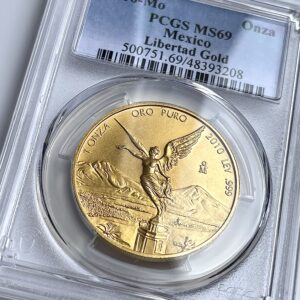
Mexico – 2010 – Libertad – Gold coin 1 oz – PCGS MS69
3.150,00 €plus shippingDelivery Time: approx. 2-3 days (excluding Saturdays, Sundays and public holidays) -
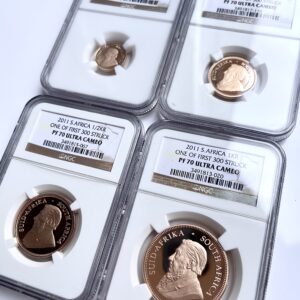
Krugerrand – 2011 – Set – One of First 300 – 4 Gold Coins Proof – NGC PF70 UCAM
5.500,00 €plus shippingDelivery Time: approx. 2-3 days (excluding Saturdays, Sundays and public holidays) -
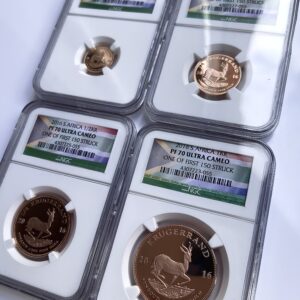
Krugerrand – 2016 – Set – One of First 150 – 4 Gold Coins Proof – NGC PF70 UCAM
5.500,00 €plus shippingDelivery Time: approx. 2-3 days (excluding Saturdays, Sundays and public holidays) -
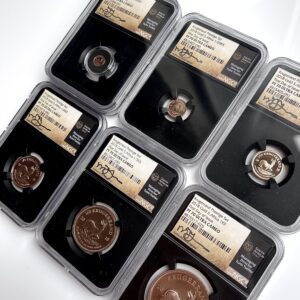
Krugerrand – 2018 – Set – First Day of Issue – 6 Gold Coins Proof – NGC PF70 UCAM
5.750,00 €plus shippingDelivery Time: approx. 2-3 days (excluding Saturdays, Sundays and public holidays) -
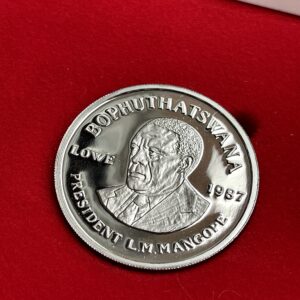
Bophuthatswana – 1987 – 10 years of independence – platinum – 1oz – with original case and certificate
2.195,00 €plus shippingDelivery Time: approx. 2-3 days (excluding Saturdays, Sundays and public holidays) -
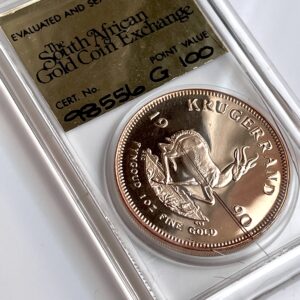
South Africa – Krugerrand – GRC – 1990 – SAGCE PoV 100 – 1oz Proof Gold
3.250,00 €plus shippingDelivery Time: approx. 2-3 days (excluding Saturdays, Sundays and public holidays) -
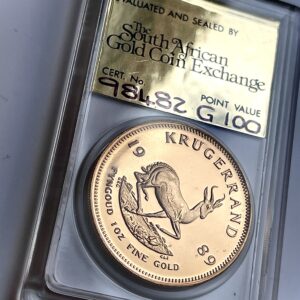
South Africa – Krugerrand – GRC – 1989 – SAGCE PoV 100 – 1oz Proof Gold
3.250,00 €plus shippingDelivery Time: approx. 2-3 days (excluding Saturdays, Sundays and public holidays) -
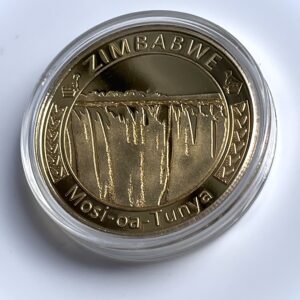
Zimbabwe – 2022 – Mosi-oa-Tunya – 1oz Proof Gold
3.150,00 €plus shippingDelivery Time: approx. 2-3 days (excluding Saturdays, Sundays and public holidays)

